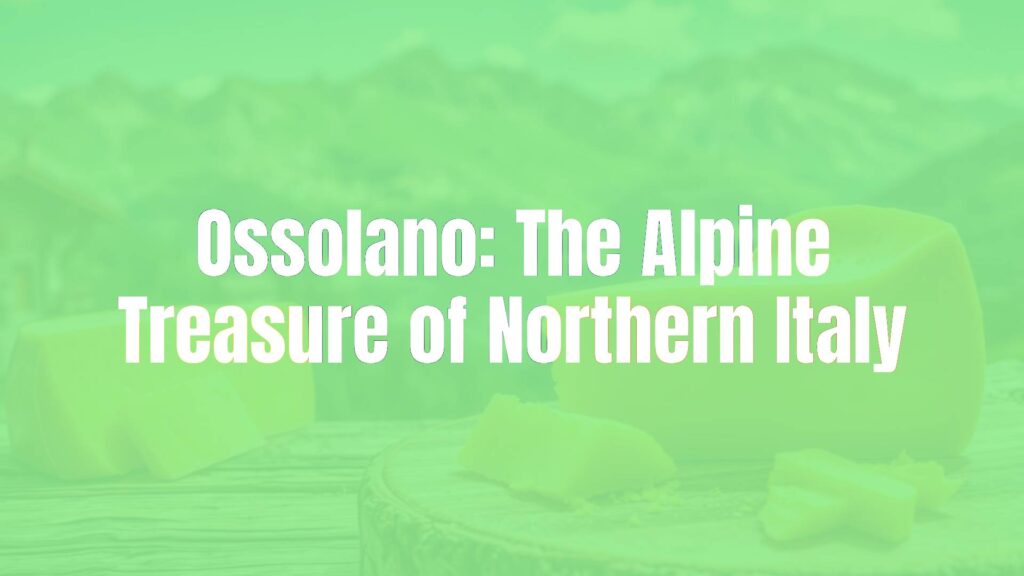Introduction to Ossolano Cheese
Ossolano is a beloved semi-hard cheese originating from the Ossola Valley in northern Piedmont, Italy, near the border with Switzerland. Well-regarded for both its heritage and distinct flavor profile, Ossolano stands as a testament to the traditional Alpine cheese-making culture alive in the Italian Alps.
Defining Characteristics
What sets Ossolano apart is its rich, nutty flavor and firm yet creamy texture, aspects deeply influenced by local pasture grass, herbs, and the region’s mountainous terroir. The cheese is typically cylindrical and ranges in color from pale yellow to deep gold, depending on aging. The interior is smooth, dotted with rare, tiny holes, while its rind develops into a darker, natural hue as it matures.
A Journey Through History
Cheese-making in the Ossola Valley can be traced back centuries, with the first written references to Ossolano appearing in historical records from the 13th century. The local traditions are closely tied to transhumance—the seasonal movement of herders and cattle up and down alpine pastures—as families have passed down their cheese-making practices through the generations. In recognition of its cultural significance and unique qualities, Ossolano received the European PDO (Protected Designation of Origin) status in recent years, ensuring its production remains authentic to its roots.
Production Methods and Varieties
Ossolano is typically made using raw cow’s milk from local breeds such as Bruna Alpina. The production process involves natural fermentation and slow curdling, after which the curds are pressed into molds and aged in stone cellars—often for a minimum of 60 days, but sometimes much longer. The cheese is available in two main forms: Ossolano, aged a minimum of 60 days, and Ossolano d’Alpe, made only from milk produced on summer alpine pastures, typically with a longer maturation period that intensifies its flavors.
Cultural Importance in the Alpine Regions
Ossolano’s cultural value goes beyond the table; it has long been a dietary staple for local families, shepherds, and farmers, sustaining them through harsh Alpine winters. The cheese is frequently featured in local fairs and markets, celebrated as an emblem of regional identity and rural resilience. Its production directly supports small-scale dairy farms and preserves the landscape through traditional grazing practices.
Serving Ideas and Pairings
Traditionally, Ossolano is enjoyed simply, cut into wedges, often accompanied by rustic bread or polenta. It shines on cheese boards but is also used to enrich Alpine dishes such as hearty soups, baked gnocchi, or savory tarts. The cheese’s balanced, nutty taste makes it a versatile companion for local red or white wines—especially Nebbiolo or white wines from Piedmont—as well as raw honey and dried fruits.
Enjoying Ossolano at Its Best
For the optimal tasting experience, allow Ossolano to reach room temperature before serving to fully appreciate its aroma and texture. If selecting the d’Alpe variety, savor its enhanced depth of flavor and unique notes imparted by high-altitude mountain herbs. Whether relished on its own or as part of an Alpine feast, Ossolano brings a taste of Italy’s mountain heritage to the table, making every bite a journey into centuries-old traditions.

